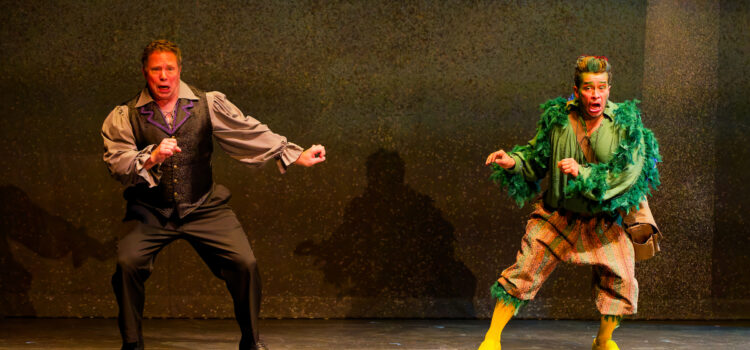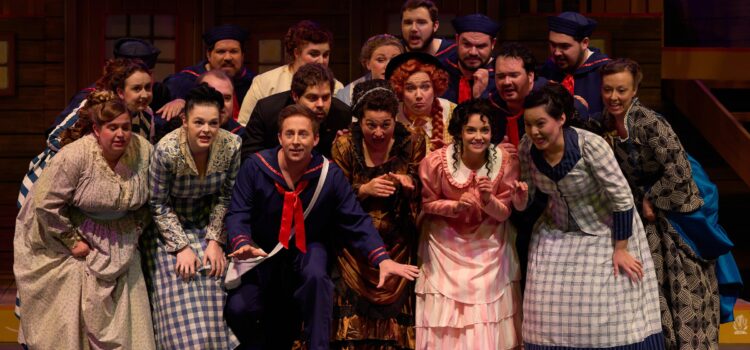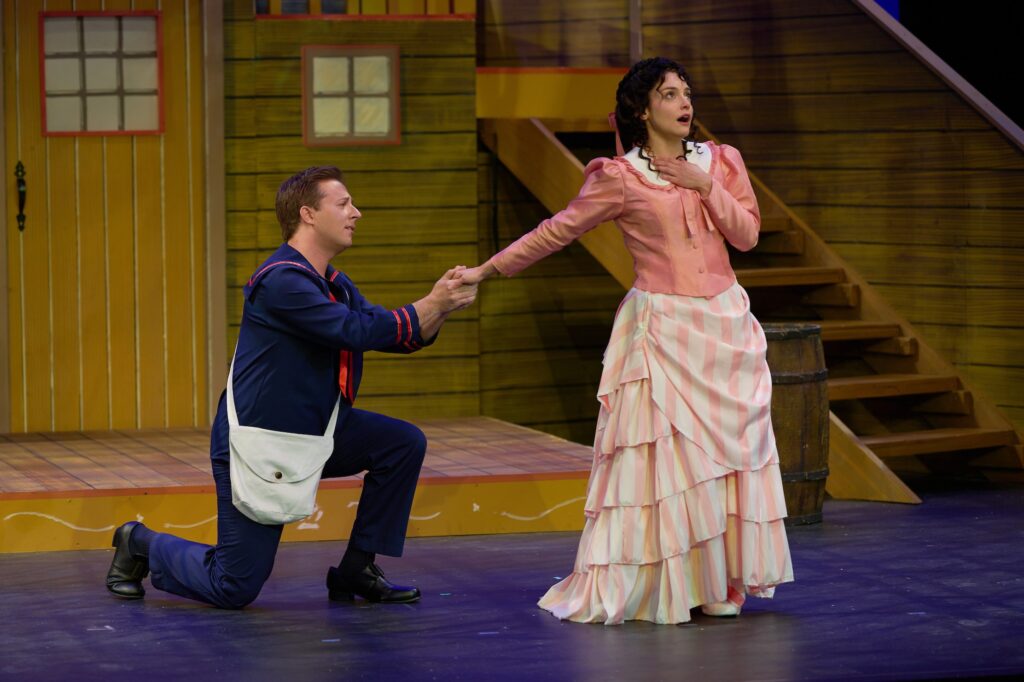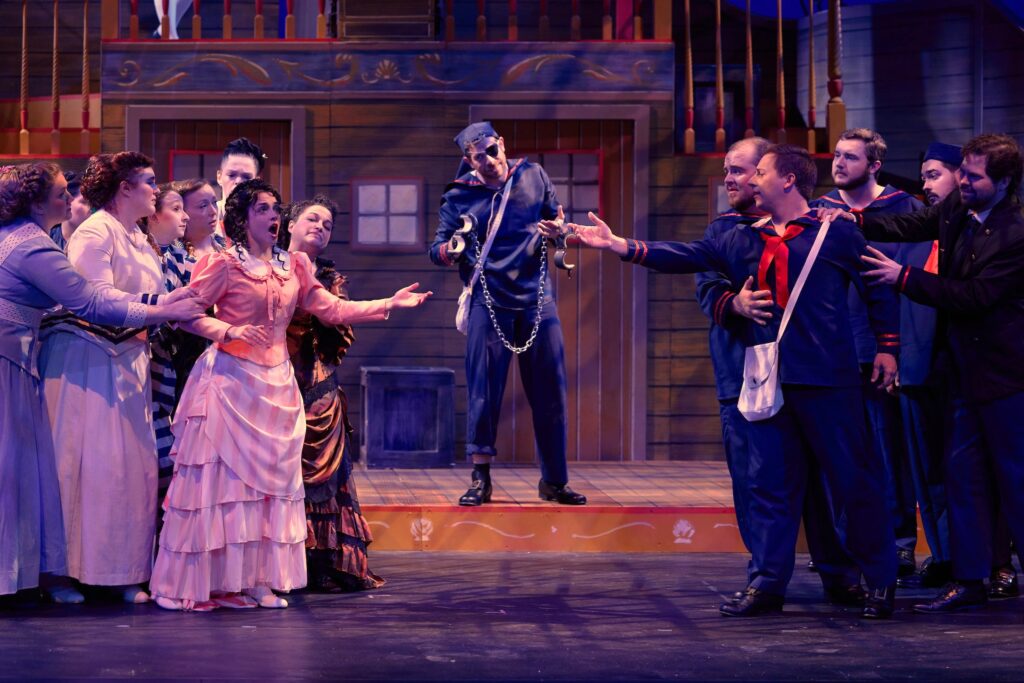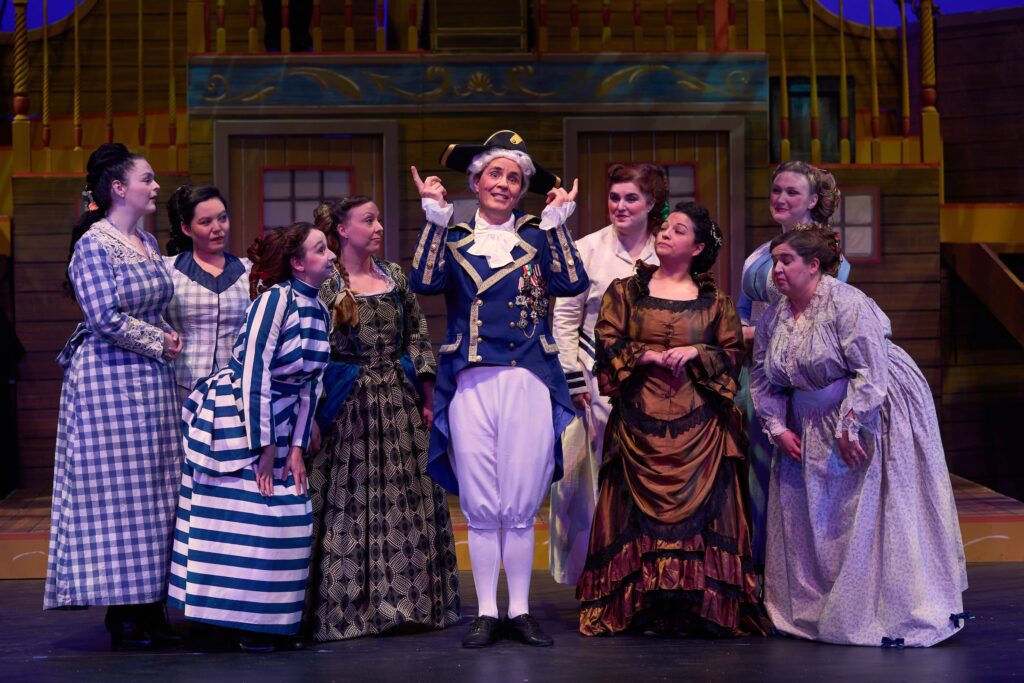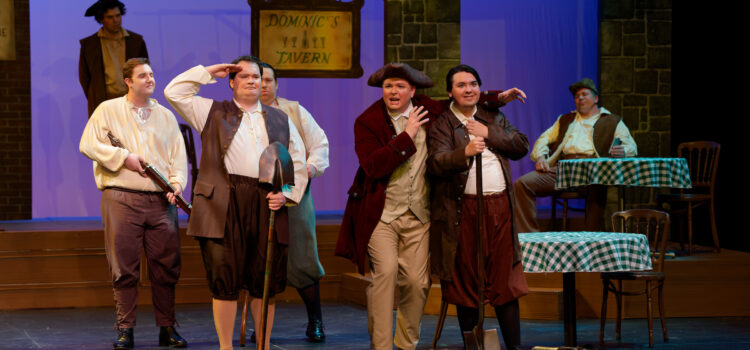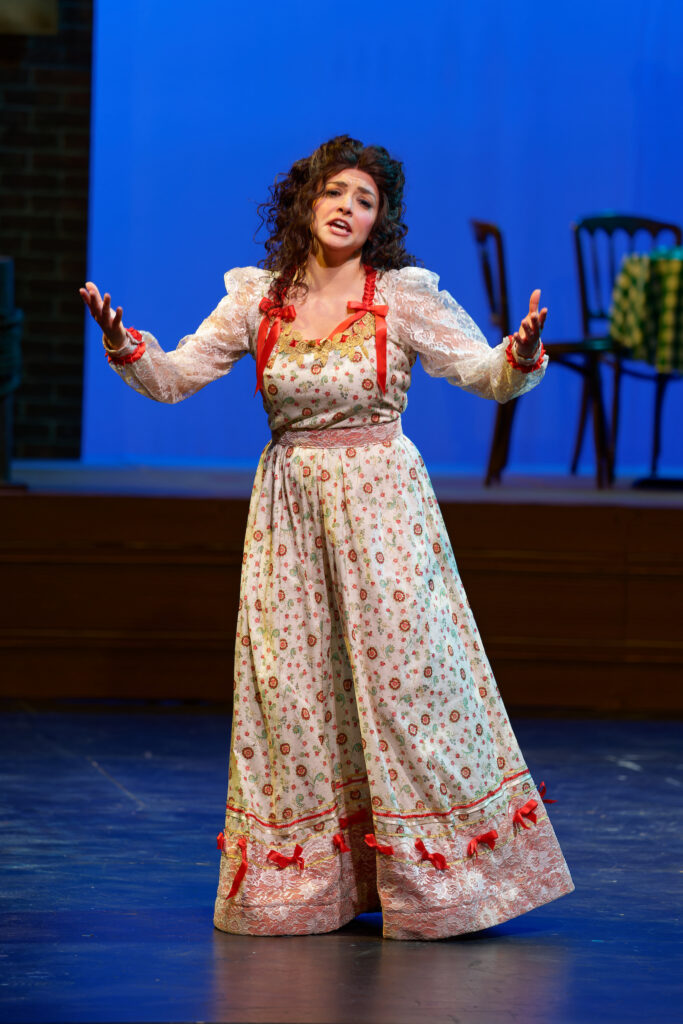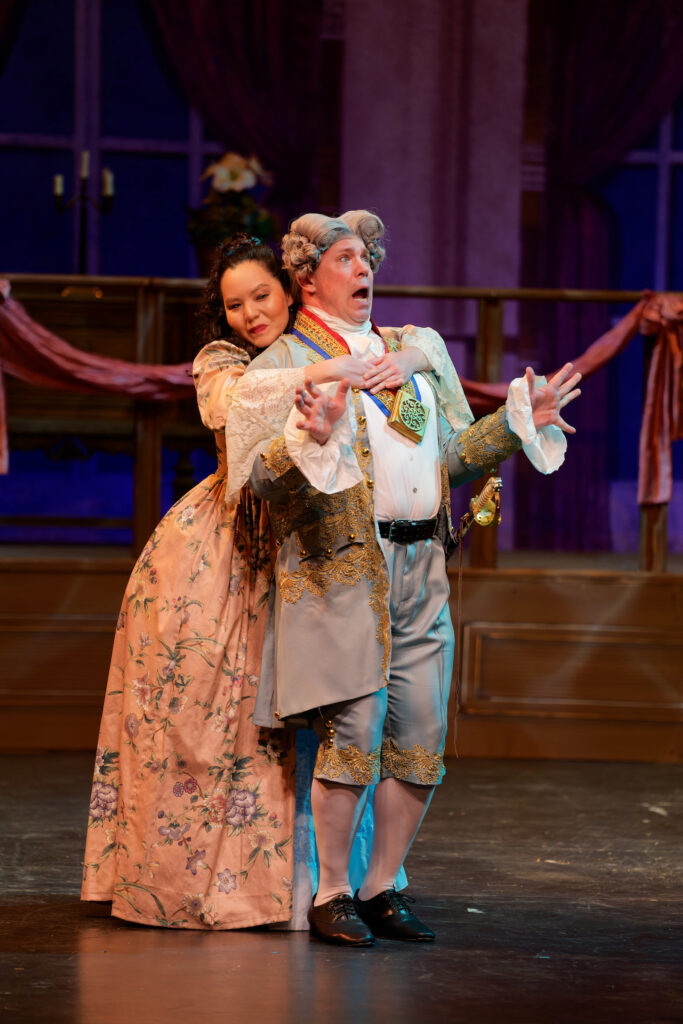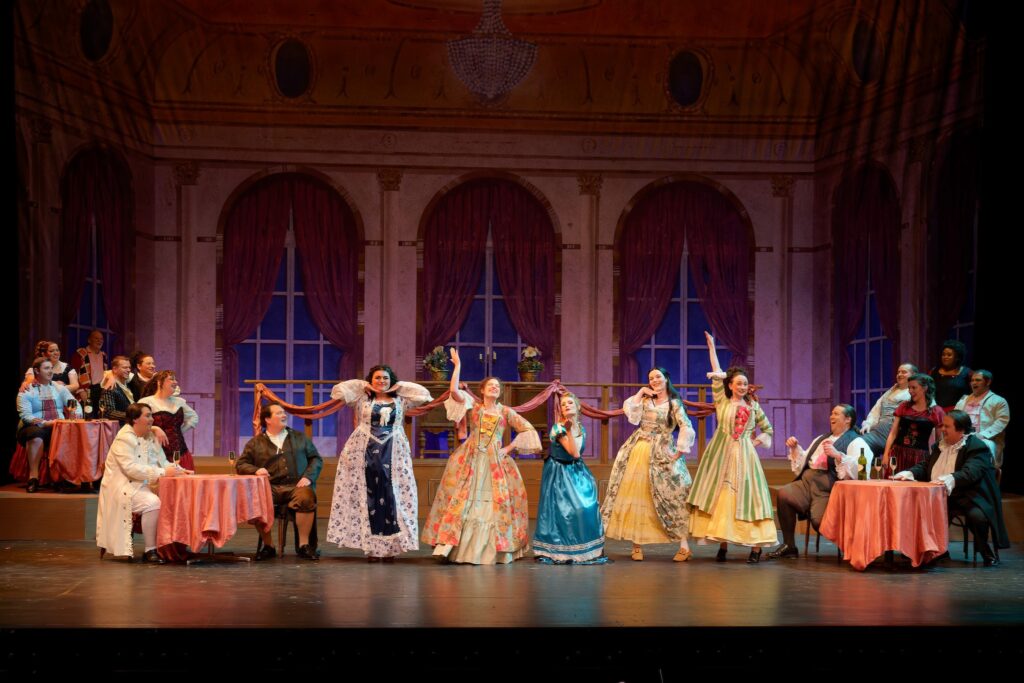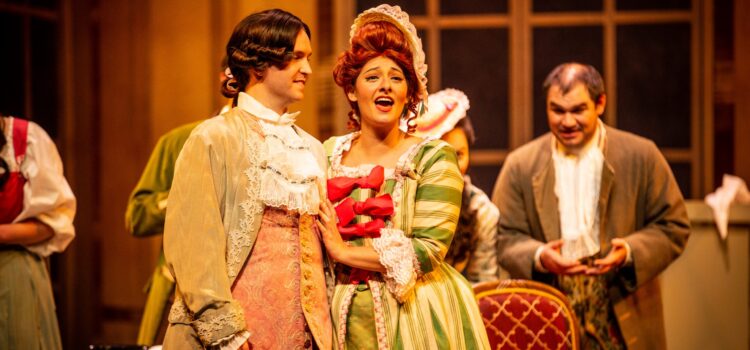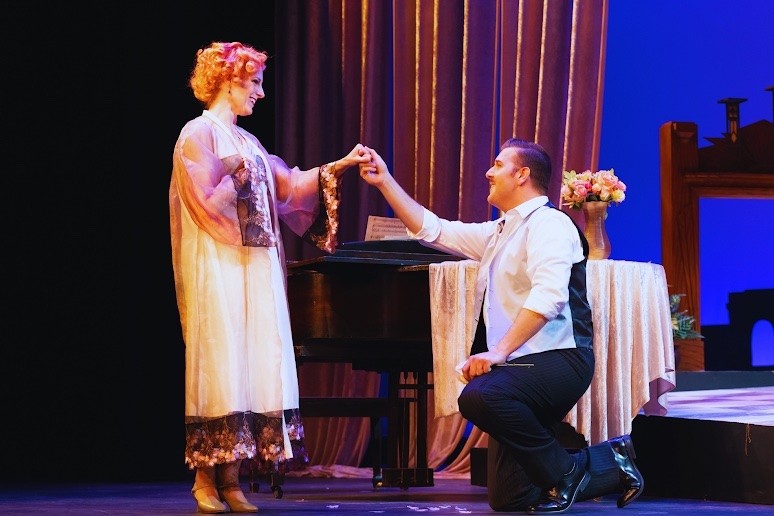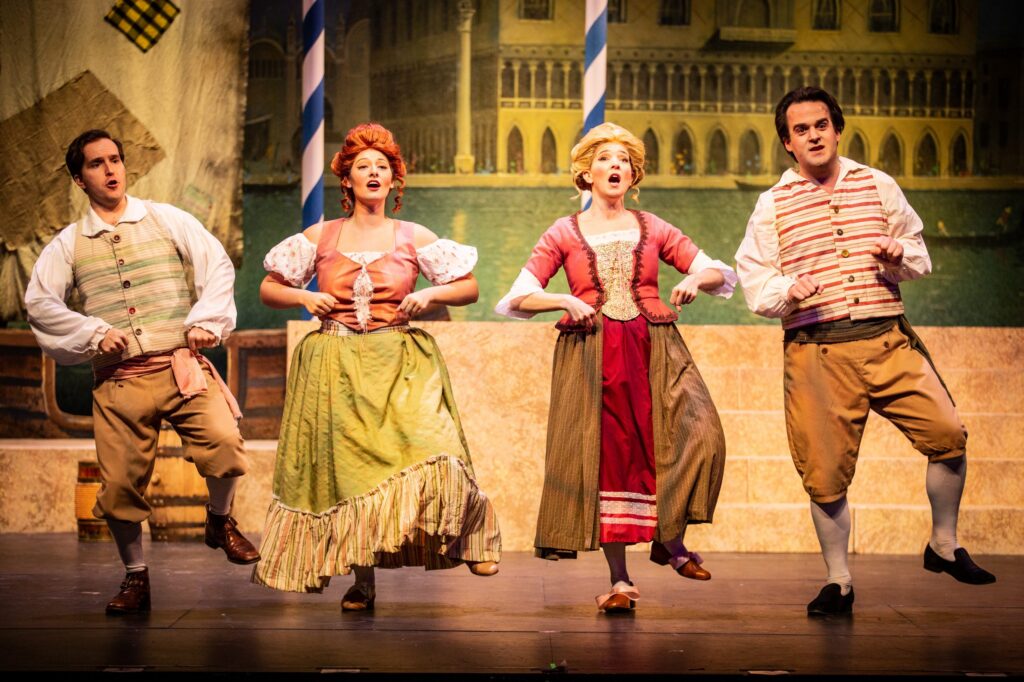By CB Adams
Mozart’s “The Magic Flute” balances fairy-tale whimsy with deeper allegory, and Winter Opera’s production embraces that duality with refreshing sincerity. Without gimmicks, forced interpretations or distracting modern flourishes, it trusts the material, the creative team and the performers to deliver warmth, humor and a thoroughly satisfying experience. It’s just Mozart’s music and Emmanuel Schikaneder’s libretto—presented with clarity and respect.
The story unfolds in a mythical realm where beasts lurk, magic reigns and two young lovers—Prince Tamino and Princess Pamina—are ensnared in a cosmic struggle between the vengeful Queen of the Night and Sarastro, the High Priest of the Sun.
Schikaneder’s libretto is layered with the unmistakable symbolism of Freemasonry (and not a small amount of mumbo jumbo). Winter Opera’s production, however, softens the esoteric elements. Although sung in the original German, the dialogue is delivered in English (including some modern vernacular) making for a more accessible production.
Winter Opera assembled a fine cast that balances local vocal prowess and theatrical charm. Tenor Alexander Scheuermann embodies Tamino with the kind of heroic presence that makes the role (and his voice) soar. As Papageno, bass-baritone Steve Valenzuela balances comedy and warmth, never overplaying his good-natured buffoonery.

Soprano Maggie Kinabrew delivers a formidable Queen of the Night, her coloratura razor-sharp, slicing through the air with precision in her Act II aria. Bass Bert Johnson’s Sarastro exudes gravity, his deep obsidian tones lending the character an air of tangible authority.
Elena Galván’s Pamina is as spirited as she is sweet-voiced. Her performance delivers dramatic depth and vocal elegance. Leann Schuering charms as Papagena and baritone Joel Rogier lends a commanding presence as the Spokesman of the Temple.
Marc Schapman’s Monostatos, though lecherous in intent, plays more as comic relief—his comedic timing enhancing rather than detracting from his vocal performance.
The supporting cast is equally well-assembled. Karen Kanakis, Brittany Moleski and Emily Moore—playing the Queen’s Three Ladies—are visually striking in jewel-toned costumes, each creating her own distinct character.
The Three Spirits, performed by Anna Edwards, Chloe Haynes and Calista Goldwasser, bring a graceful presence to their ethereal roles.
Rounding out the fine casting is the chorus. Even two guards enjoy a satisfying, if small, moment in the second act—exemplifying the overall quality of the production. Under Mark Ferrell’s light baton, the small orchestra delivers a full and at times powerful performance of Mozart’s beautiful score. The extended overture was one of the many enjoyable moments in this production.

Jen Blum-Tatara’s 18th century-inspired costumes are as period-appropriate as they are, at times, opulent. Scott Loebl’s minimal-but-evocative set design provides just the right amount of atmosphere without calling too much attention to itself. Loebl’s set and Michael Sullivan’s lighting design deliver another of this production’s best moments.
Late in the second act, Tamino plays his flute and he and Pamina pass through fire and water. To convey their journey, they pass behind a patterned screen (red for fire and blue for water) in a shadow play that stretches the width of the stage. The approach works well for this turning point in the opera.
“The Magic Flute” is a fitting end to Winter Opera’s 24-25 season (their 18th) and sets a good precedent for next season.

Winter Opera’s “The Magic Flute” was presented at Kirkwood Community Center Feb. 28 through March 2.

CB Adams is an award-winning fiction writer and photographer based in the Greater St. Louis area. A former music/arts editor and feature writer for the St. Louis Globe-Democrat, his non-fiction has been published in local, regional and national publications. His literary short stories have been published in more than a dozen literary journals and his fine art photography has been exhibited in more than 40 galley shows nationwide. Adams is the recipient of the Missouri Arts Council’s highest writing awards: the Writers’ Biennial and Missouri Writing!. The Riverfront Times named him, “St. Louis’ Most Under-Appreciated Writer” in 1996.

